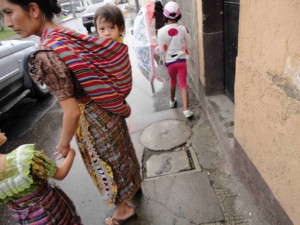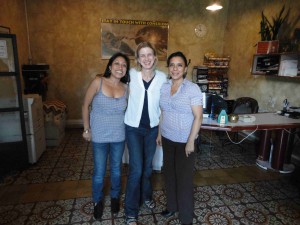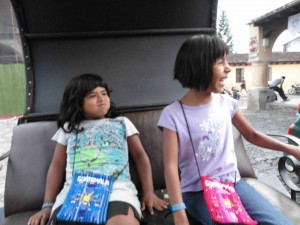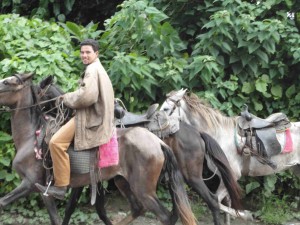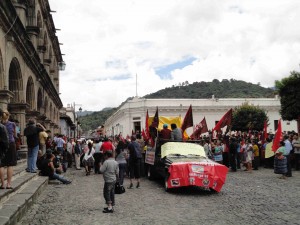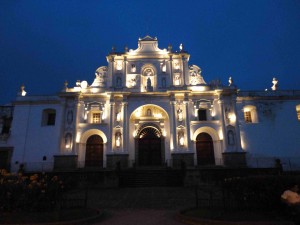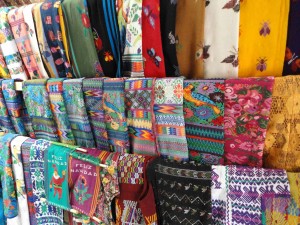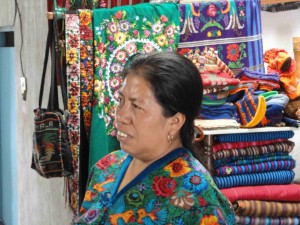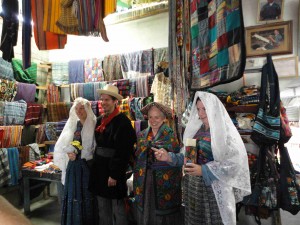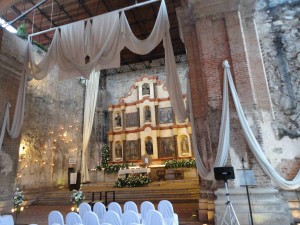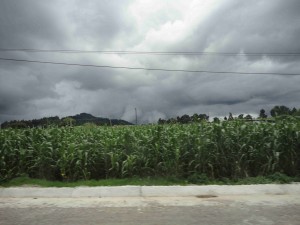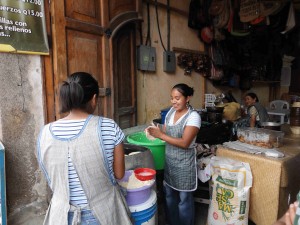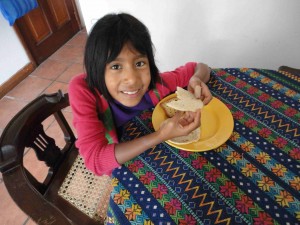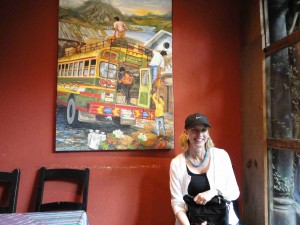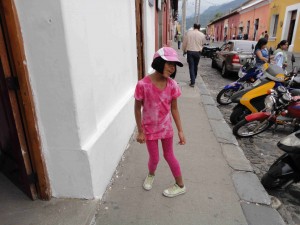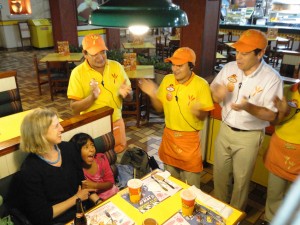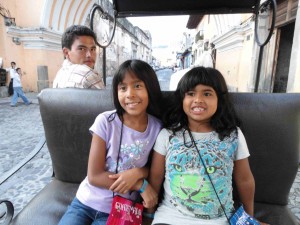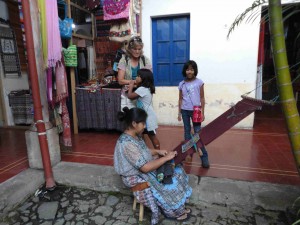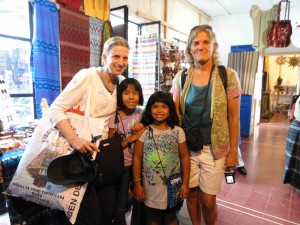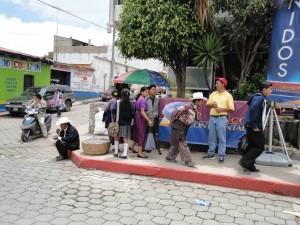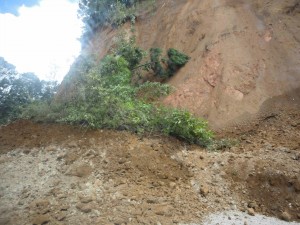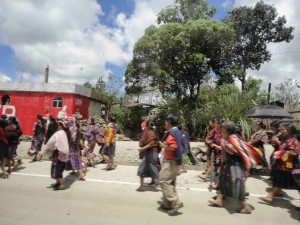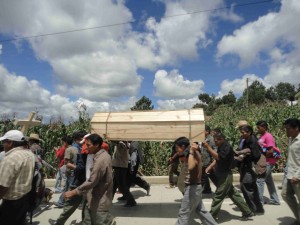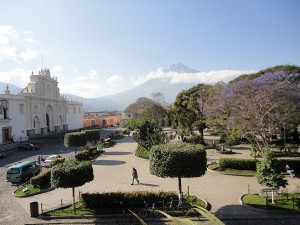
I’ve never visited Antigua during April, when the entire city celebrates Holy Week with sawdust carpets and parades through the streets. So I can’t say what that’s like. What I can say is that February is my favorite time to visit. The weather is warm and there are very few other tourists.
This morning, after I walked Olivia and Patrice to Spanish school, I took a few photos. Above, is my 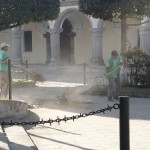 favorite view of the Square, taken from the second floor of the Municipalidad. The Cathedral is on the left, and Volcano Agua in the background. Antigua was just waking up; here, you can see why the city always looks so pretty. Every morning, men sweep the park. This month, they are also repairing the cobblestone streets.
favorite view of the Square, taken from the second floor of the Municipalidad. The Cathedral is on the left, and Volcano Agua in the background. Antigua was just waking up; here, you can see why the city always looks so pretty. Every morning, men sweep the park. This month, they are also repairing the cobblestone streets.
As usual, a group of intrepid adventurers was queued up outside Old Town Outfitters to climb Volcano Pacaya or go on a mountain bike ride. In the evening, backpackers often hang out in front of Cine Lounge La Sin Ventura. The theater is next door to Mono Loco, another popular night spot. The restaurant is famous for its gigantic plate of nachos, enormous bowls of chili, and outstanding French fries.
For Americans with children who will only eat at Mickey D’s, the one in Antigua has a lovely garden where your kids can run around and play. If your child, like mine, is a particular (read: finicky) eater, pizza restaurants such as El Macarone are a good alternative to black beans and rice.
Antigua boasts one of the largest “fancy” coffee shops in all of Guatemala. Located on the north side of the Square, Cafe Barista serves a range of lattes and cappuccinos extensive enough to keep any java nut happy. Olivia loves their vanilla cake. Cafe Barista’s prices are high, but (just between us), there are very few bargains to be had in Antigua. Think of it as a “charming experience tax.”
Time for me to get outside and enjoy this day! xoxo
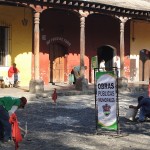

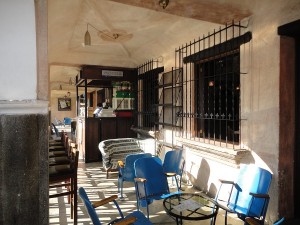
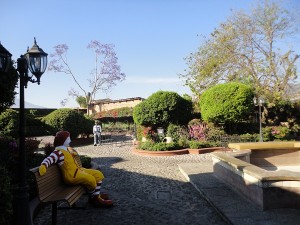
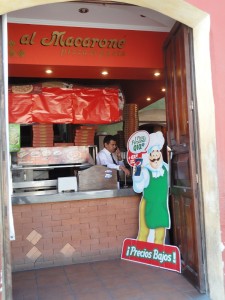
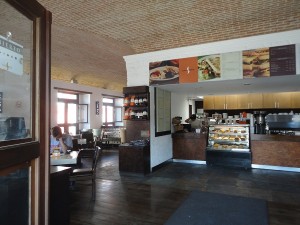
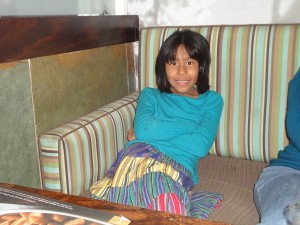



 ShareThis
ShareThis